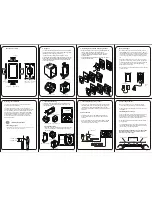
Potential differences can occur between different sections when con-
trollers and peripheral equipment are connected by means of non-iso-
lated connections or the screens of screened cables are connected at
both ends and grounded on different sections of the plant. One
reason for a potential difference can be that different sections of the
plant are powered from different power sources. These potential dif-
ferences must be reduced by means of equipotential bonding conduc-
tors to ensure that the electronic equipment employed on the plant
operates properly.
n
The lower the impedance of the equipotential bonding conductor,
the higher the effectiveness of potential equalization.
n
The impedance of the equipotential bonding conductor must not
exceed 10% of the impedance of the screen where screened
signal lines are connected between the different sections of the
plant and the screening is connected to ground/neutral on both
sides.
n
The cross-sectional area of the equipotential bonding conductor
must be calculated to carry the maximum equalization current.
The following cross-sections have been successfully employed:
– 16mm
2
Cu for equipotential bonding conductors up to 200m
– 25mm
2
Cu equipotential bonding conductors exceeding 200m.
n
Use copper or galvanized steel for equipotential bonding conduc-
tors. These must be connected to ground/neutral by means of
large-surface connections that are protected from corrosion.
n
The equipotential bonding conductor should be installed in such a
manner that it includes the smallest surface between the bonding
conductor and the signal lines.
Screening is one method commonly used to reduce (attenuate) the
interference pick-up from magnetic, electrical or electromagnetic
fields.
n
Interference on screens is conducted to ground by the conductive
connection between the screen and the screening rain/enclosure.
To avoid interference from these currents it is very important that
the neutral connection is a low-impedance connection.
n
You should only use cables that are provided with a braided
screen. The degree of screening should be more than 80%.
n
Avoid cables with foil-type screens as the foil can be easily dam-
aged by tension and pressure at the point of attachment; this can
result in reduced effectiveness of the screening action.
n
As a rule you should always ground the screens of cables on both
ends. This is the only way in which you can ensure that high fre-
quency interference is attenuated properly.
In exceptional cases it may be necessary to ground the screen on
one side only. However, this will only attenuate the lowest frequen-
cies. The one-sided grounding of screens may provide advantages
when:
n
It is not possible to install an equipotential bonding conductor
n
Analogue signals (a few mV or mA) must be transmitted
n
Foil-type screening (static screening) is employed.
Equipotential bonding
Rules for equipotential
bonding
Screening of lines and
cables
One-sided grounding of
screens
VIPA HMI Touch Panel
Installation Guidelines
EMC-equitable cabling
HB160 | TP-ECO | 62K-NHC0 | GB | 14-27
72




































